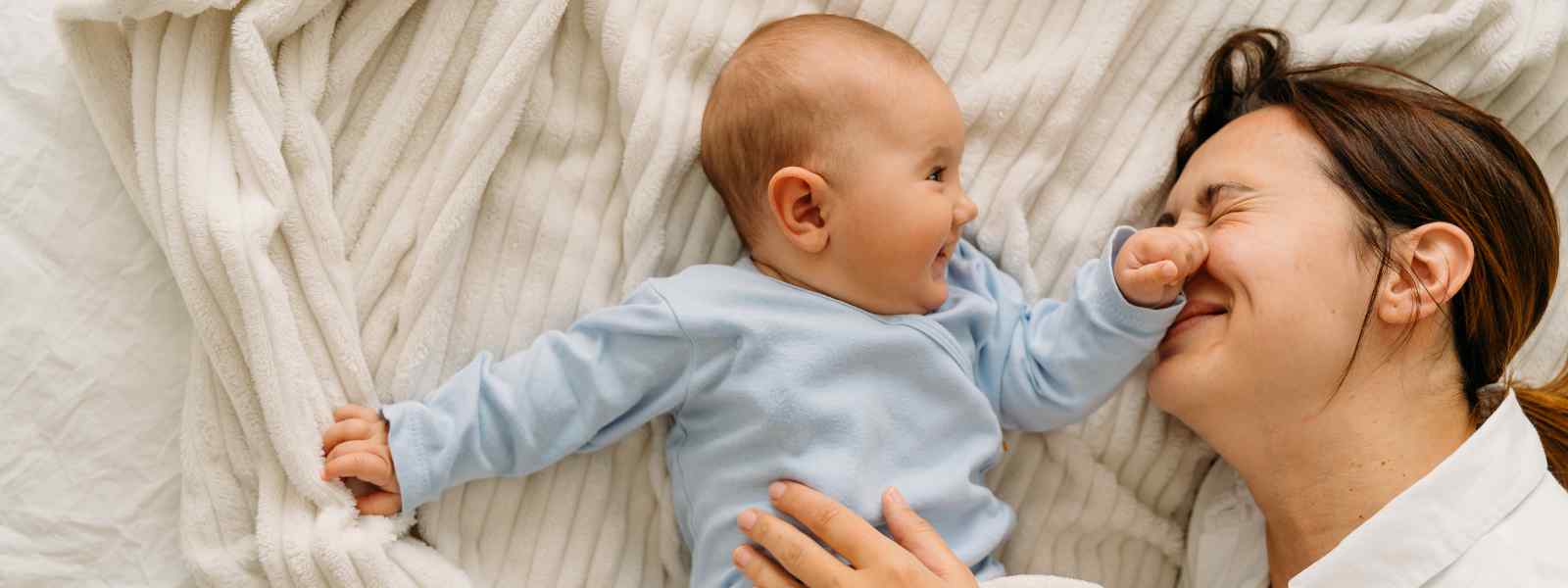
It’s a heartwarming bonding moment, when a parent coos or smiles at their newborn, and their baby seems to follow suit.
But whether or not babies are actually born with the innate ability to imitate has been at the centre of a decades long debate by psychologists.
Now a new study by scientists in Scotland and Sweden is exploring the biological origins of this apparent imitative capacity by considering the sequence and rhythm of the engagement in which imitation is claimed to occur.
Imitative interactions
The two-and-a-half-year study is combining traditional psychological research methods with state-of-the-art artificial intelligence techniques, to create the most comprehensive picture of infant imitative interactions to date. The project will analyse movement, vocalisation, posture, arousal, affect, and emotional expression in archived video footage of infants from birth to three months.
The project, funded by the Swedish Research Council, brings together infant psychology in Sweden with innovation in artificial intelligence data analytics from Education and Engineering at the University of Strathclyde to better measure and understand imitation.
It will analyse the structure of imitation between adults and infants to determine whether infant imitation depends on how the interaction unfolds over time.
In psychology, the phenomenon of neonatal imitation – that within hours of birth a newborn will imitate noises or expressions of adults – was a huge finding in 1977. But over the decades debate has continued as to whether this behaviour truly exists, is just a reflex, or if infants are actively trying to copy and connect with others.
Principal Investigator at the University of Strathclyde, Jonathan Delafield-Butt, Professor of Child Development and Director of the cross-disciplinary Laboratory for Innovation in Autism at the university, said: “We will test the view that infant imitation is a purposeful and meaningful act of engagement, suggesting a real desire within to connect with others from birth.
Humans learn by imitating others, and children imitate their parents to generate understanding of the world. How we understand newborn children’s social capacity is central to our understanding of how the mind develops.
“Imitation is one of the earliest signs of social interaction and serves as the foundation for learning, social rituals, and adult culture. However, there is debate over whether infants are truly imitating or simply responding with excitement to parents making unusual gestures, such as mouth puckering, which may lead them to produce similar actions.
“Our study will reframe this debate by considering infant behaviour as a meaningful act of participation.”
Infant play
The study’s Principal Investigator at Linköping University in southeast Sweden is Mikael Heimann, Emeritus Professor of Developmental Psychology, whose work examines the origins of conscious experience. He said: “This new collaborative project uses videos from two of my previous studies that will be reanalysed using AI. They contain imitation experiments with infants up to three – months of age as well as videos of parent-infant play.
“Neonatal imitation has been an elusive phenomenon over the years and I hope that the project will help us to clarify some of the unsolved issues that exist in order to achieve a better understanding of the social capacities available for infants at birth or shortly afterwards.”
The Sweden-Scotland collaboration brings fresh perspectives and scientific approaches to a fundamental debate in human development important for the science of infant care, and education.
The Strathclyde project team also includes Professor Christos Tachtatzis, Professor of Applied AI and a Co-Director of the Laboratory for Innovation in Autism, and Dr Timothy McGowan, Research Fellow in Neonatal Psychology in the Laboratory for Innovation in Autism.
The Linköping team also includes Senior Associate Professor Emil Holmer, Head of the Disability Research Division, and Assistant Professor Erik Marsja, also at the Disability Research Division.